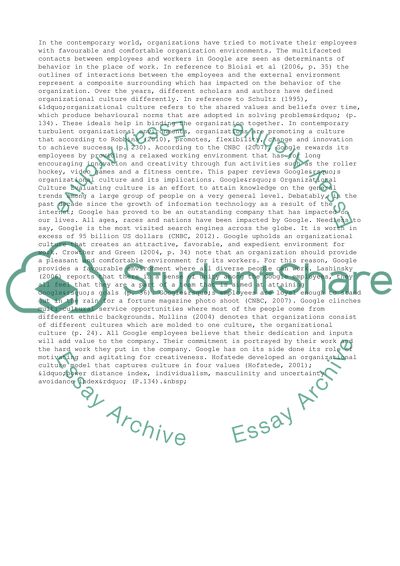Cite this document
(“Organizational Culture: Google Essay Example | Topics and Well Written Essays - 1750 words”, n.d.)
Organizational Culture: Google Essay Example | Topics and Well Written Essays - 1750 words. Retrieved from https://studentshare.org/business/1454483-google
Organizational Culture: Google Essay Example | Topics and Well Written Essays - 1750 words. Retrieved from https://studentshare.org/business/1454483-google
(Organizational Culture: Google Essay Example | Topics and Well Written Essays - 1750 Words)
Organizational Culture: Google Essay Example | Topics and Well Written Essays - 1750 Words. https://studentshare.org/business/1454483-google.
Organizational Culture: Google Essay Example | Topics and Well Written Essays - 1750 Words. https://studentshare.org/business/1454483-google.
“Organizational Culture: Google Essay Example | Topics and Well Written Essays - 1750 Words”, n.d. https://studentshare.org/business/1454483-google.


